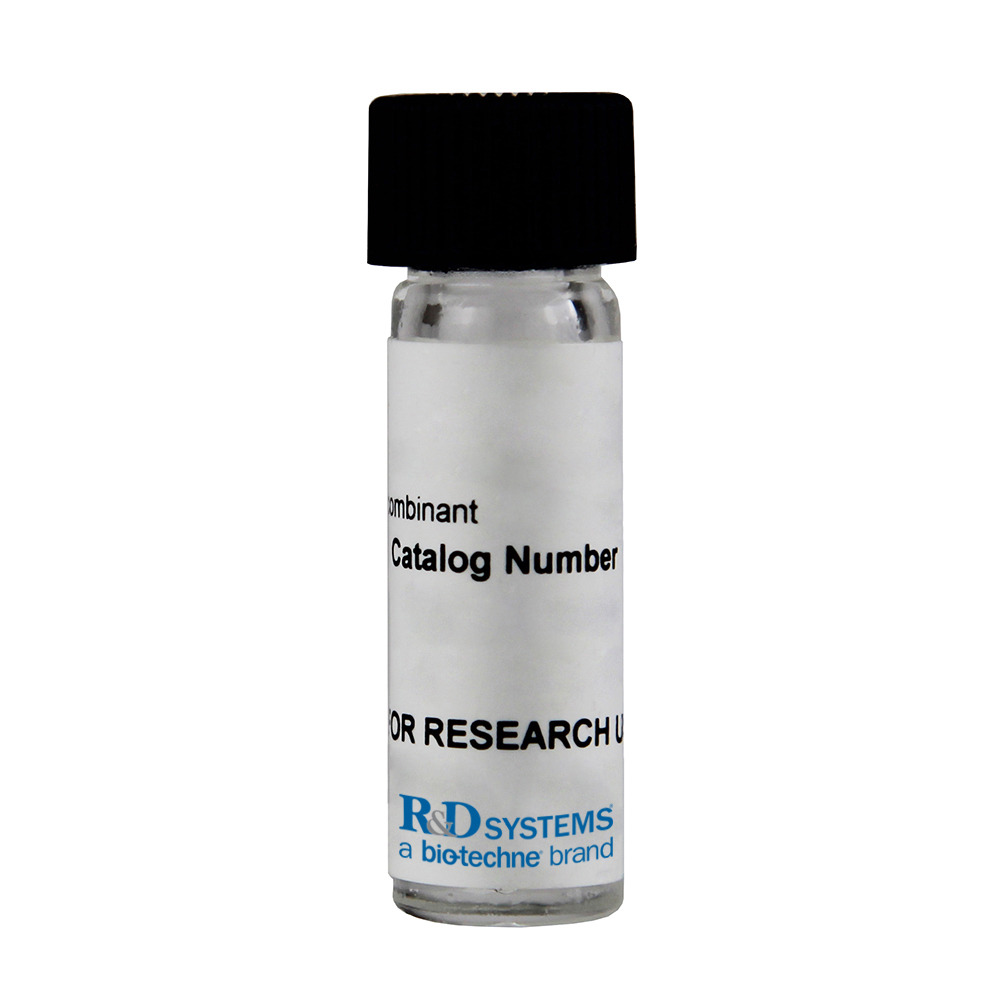 全部商品分类
全部商品分类

 下载产品说明书
下载产品说明书 下载SDS
下载SDS 用小程序,查商品更便捷
用小程序,查商品更便捷


 收藏
收藏
 对比
对比 咨询
咨询Carrier Free
CF stands for Carrier Free (CF). We typically add Bovine Serum Albumin (BSA) as a carrier protein to our recombinant proteins. Adding a carrier protein enhances protein stability, increases shelf-life, and allows the recombinant protein to be stored at a more dilute concentration. The carrier free version does not contain BSA.
In general, we advise purchasing the recombinant protein with BSA for use in cell or tissue culture, or as an ELISA standard. In contrast, the carrier free protein is recommended for applications, in which the presence of BSA could interfere.
2939-CA
| Formulation | Supplied as a 0.2 μm filtered solution in Tris, NaCl, Brij and Glycerol. |
| Shipping | The product is shipped with polar packs. Upon receipt, store it immediately at the temperature recommended below. |
| Stability & Storage: | Do not freeze.
|
Recombinant Human Carbonic Anhydrase VI Protein, CF Summary
Product Specifications
Gln18-Asn308, with a C-terminal 10-His tag
Analysis

Background: Carbonic Anhydrase VI
Carbonic Anhydrase catalyzes the reversible reaction of CO2 + H2O = HCO3- + H+, which is fundamental to many processes such as respiration, renal tubular acidification and bone resorption (1). Topics in a CA meeting (6th International Conference on the CAs, June 20‑25, 2003, Slovakia) ranged from the use of CAs as markers for tumor and hypoxia in the clinic, as a nutritional supplement in milk, and as a tool for CO2 removal and mosquito control in industry. Carbonic Anhydrase VI, also known as gustin and salivary Carbonic Anhydrase, is a zinc-metalloprotein that constitutes about 3% of human parotid saliva protein (2, 3). It was decreased in patients with loss of taste and pathological changes in taste buds (4). It is also an elementary component of milk. It plays an important role in normal growth and development of the infant alimentary tract (5).
- Hewett-Emmett, D. and R.E. Tashian (1996) Mol. Phylogenet. Evol. 5:50.
- Murakami, H. and Sly, W. S. (1987) J. Biol. Chem. 262:1382.
- Thatcher, B. J. et al. (1998) Biochem. Biophys. Res. Commun. 250:635.
- Hankin, R. I. et al. (1999) Am. J. Med. Sci. 318:380.
- Karhumaa, P. et al. (2001) Proc. Natl. Acad. Sci. USA. 98:11604.





